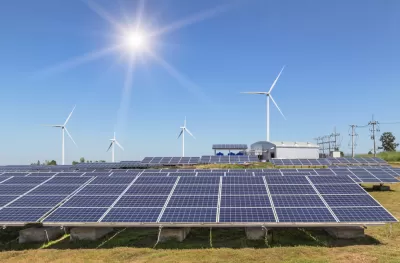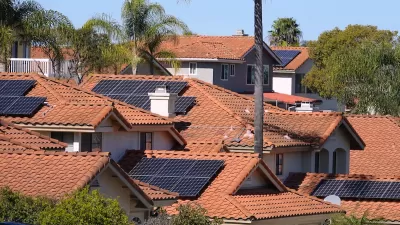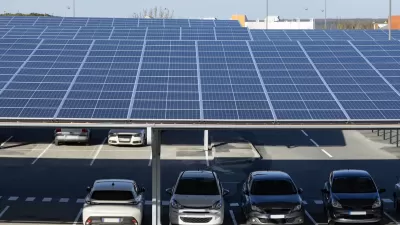The proportion of energy produced by renewable sources in the United States has almost quadrupled in the last decade.

According to a new report, "[t]he proportion of electricity the United States gets from solar and wind nearly quadrupled between 2011 and 2020," writes Tik Root.
The report used data from the U.S. Energy Information Administration to assess the gigawatt-hours produced by wind and solar generation, which both grew while geothermal generation remained stagnant.
Solar generation grew particularly quickly, with the report finding a 23-fold increase since 2011. Wind, which started at a higher percentage than solar, saw an almost threefold increase. Three states — Iowa, North Dakota and Kansas — now produce at least half the amount of electricity they consume from wind and solar.
The report also found that costs for renewable energy have dropped sharply and are projected to continue declining. This, along with aggressive state policies that support renewable energy production in places like California, has contributed to the boom. According to the report, "every state in the country has enough potential from either solar or wind energy alone to supply all of its electricity needs."
The continued growth of the sector doesn't come without challenges such as the effectiveness of transmission systems and the "social acceptability" of projects. Meanwhile, report co-author Emma Searson cautions that energy conservation is just as critical to achieving 100 percent clean energy as increasing renewable energy production, but that goal is now something potentially achievable.
FULL STORY: Renewable energy in the U.S. nearly quadrupled in the past decade, report finds

Maui's Vacation Rental Debate Turns Ugly
Verbal attacks, misinformation campaigns and fistfights plague a high-stakes debate to convert thousands of vacation rentals into long-term housing.

Planetizen Federal Action Tracker
A weekly monitor of how Trump’s orders and actions are impacting planners and planning in America.

San Francisco Suspends Traffic Calming Amidst Record Deaths
Citing “a challenging fiscal landscape,” the city will cease the program on the heels of 42 traffic deaths, including 24 pedestrians.

Defunct Pittsburgh Power Plant to Become Residential Tower
A decommissioned steam heat plant will be redeveloped into almost 100 affordable housing units.

Trump Prompts Restructuring of Transportation Research Board in “Unprecedented Overreach”
The TRB has eliminated more than half of its committees including those focused on climate, equity, and cities.

Amtrak Rolls Out New Orleans to Alabama “Mardi Gras” Train
The new service will operate morning and evening departures between Mobile and New Orleans.
Urban Design for Planners 1: Software Tools
This six-course series explores essential urban design concepts using open source software and equips planners with the tools they need to participate fully in the urban design process.
Planning for Universal Design
Learn the tools for implementing Universal Design in planning regulations.
Heyer Gruel & Associates PA
JM Goldson LLC
Custer County Colorado
City of Camden Redevelopment Agency
City of Astoria
Transportation Research & Education Center (TREC) at Portland State University
Jefferson Parish Government
Camden Redevelopment Agency
City of Claremont





























